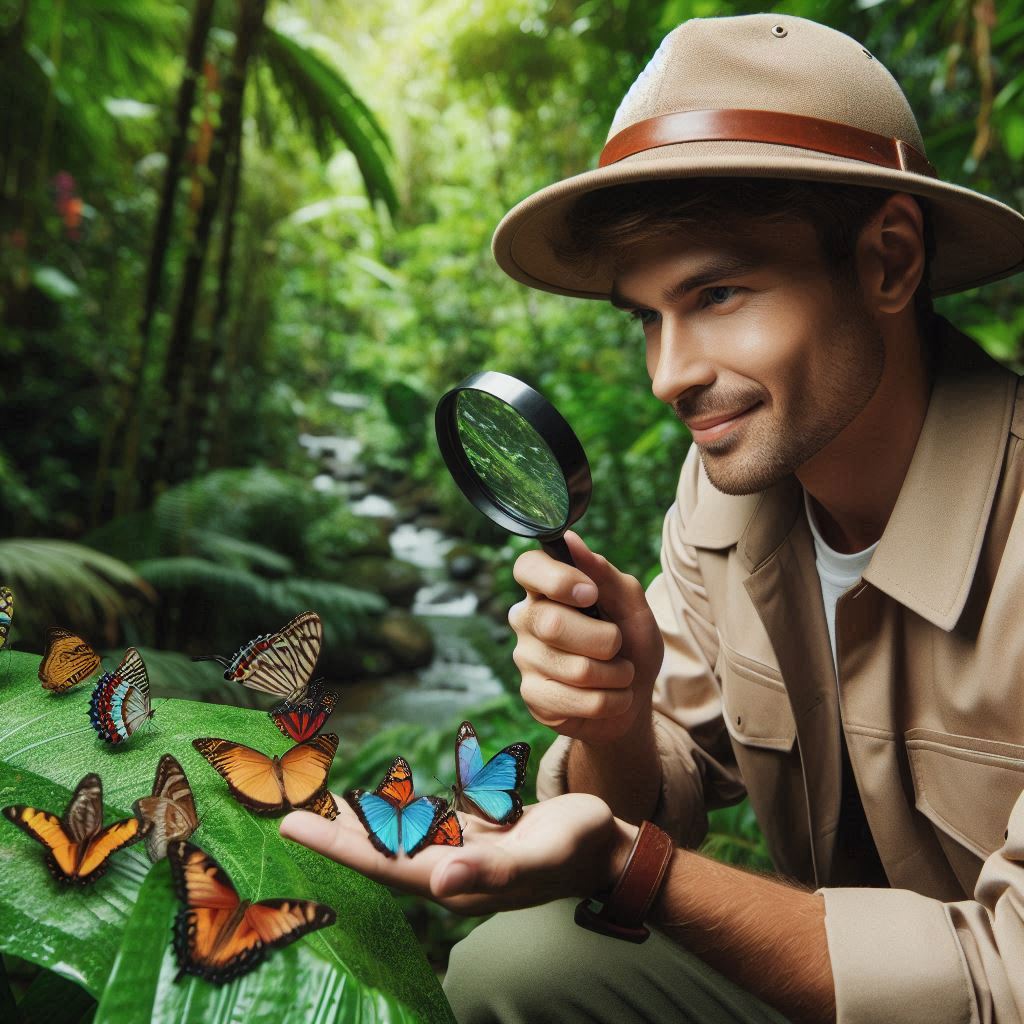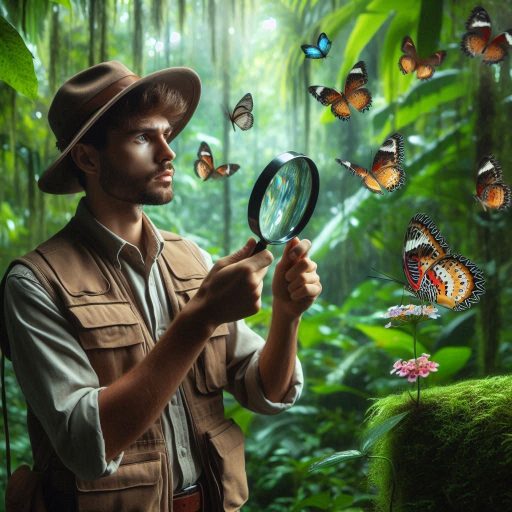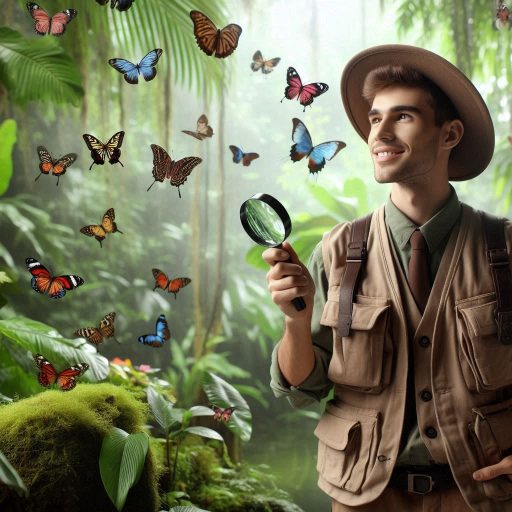Introduction
The field of zoology has always been at the forefront of scientific discovery, and recent innovations in research techniques are driving this progress even further.
As technology continues to evolve, zoologists are harnessing new tools and methodologies that enhance data collection, analysis, and interpretation.
Techniques such as genomic sequencing, remote sensing, and advanced bioinformatics are revolutionizing how researchers study animal behavior, genetics, and conservation.
Staying up-to-date with the latest advancements in zoology is crucial for researchers, educators, and wildlife enthusiasts alike.
As our understanding of ecosystems and biodiversity deepens, so does the need for accurate and timely information.
By embracing cutting-edge technologies, scientists can make informed decisions that affect conservation efforts and wildlife management.
The potential impact of these innovations on the future of zoological research is immense.
Enhanced research techniques can lead to more effective conservation strategies, improve our understanding of species interactions, and help mitigate the effects of climate change on wildlife.
Ultimately, these advancements empower us to protect our planet’s rich biodiversity for generations to come.
Traditional Methods vs. Modern Technology
Compare and Contrast Traditional Zoology Research Methods with Modern Technological Advancements
Zoology research has evolved significantly over the years.
Traditionally, researchers relied on manual observation and specimen collection.
They spent hours tracking animal behaviors and habitats.
Field notes and sketches formed the backbone of their studies.
However, these methods often lacked precision and comprehensiveness.
In contrast, modern technology has revolutionized zoology research, making it more efficient and accurate.
How Technology Such as DNA Sequencing, GIS Mapping, and Remote Sensing Are Revolutionizing the Field of Zoology
Techniques such as DNA sequencing have enhanced species identification.
Researchers can analyze genetic material from samples, allowing them to uncover relationships among species previously undetectable.
This deeper insight into biodiversity and conservation efforts has become essential.
Geographic Information Systems (GIS) mapping is another groundbreaking tool.
GIS technology allows researchers to visualize spatial data effectively.
It helps in analyzing animal distribution and habitat preferences.
By integrating various data layers, researchers can identify critical habitats, supporting better management and conservation planning.
Remote sensing has also transformed how scientists study wildlife.
Satellites and drones capture high-resolution images of landscapes.
These images help monitor habitat changes over time.
Remote sensing enables researchers to observe animal movements without disturbing them.
This technology provides a broader perspective on ecological interactions.
The Benefits of Using Modern Technology in Zoological Research
The benefits of using modern technology in zoology are immense.
First, technology enhances data accuracy and reliability.
Automated data collection minimizes human error, allowing researchers to focus on analyzing data instead of gathering it.
Second, modern tools save time and resources.
Advanced equipment can process large datasets quickly, enabling researchers to conduct complex analyses that would take weeks or months manually.
This efficiency accelerates research findings and enhances productivity.
Third, technology fosters collaboration among scientists.
Digital platforms allow researchers worldwide to share data and insights.
This collaboration leads to a more comprehensive understanding of global biodiversity.
Lastly, modern technology promotes ethical research practices.
Non-invasive techniques minimize stress on animals during studies, aligning with conservation goals and ethical considerations.
The shift from traditional methods to modern technology has transformed zoology research.
DNA sequencing, GIS mapping, and remote sensing are just a few examples of how technology has revolutionized the field.
These advancements enhance data accuracy, save time, foster collaboration, and promote ethical practices.
As technology continues to evolve, zoology will benefit from even more innovative research techniques, paving the way for groundbreaking discoveries.
Read: Women in Botany: Celebrating Pioneers and Leaders
Big Data in Zoology
How the Use of Big Data and Machine Learning Algorithms Are Transforming Zoology Research
Big data is revolutionizing zoology research, enabling scientists to analyze vast amounts of information.
Researchers now collect data from various sources, including field studies, camera traps, and GPS tracking.
This influx of information allows for more detailed and comprehensive analyses.
Machine learning algorithms play a crucial role in processing this data.
They can identify patterns and trends that humans may overlook.
These algorithms enhance the ability to make predictions about animal behavior and population dynamics.
How Scientists Are Utilizing Large Datasets to Analyze Animal Behavior, Population Dynamics, and Environmental Changes
Scientists are harnessing large datasets to gain insights into animal behavior.
For instance, researchers analyze movement patterns using GPS tracking data.
This information helps understand migration routes and habitat preferences.
Additionally, scientists examine population dynamics through extensive data collection over time.
They track changes in population size and structure, revealing critical information about species health.
Environmental changes also come under scrutiny through big data analysis.
Researchers utilize satellite imagery and remote sensing to monitor habitat alterations.
They can assess how climate change and human activities impact ecosystems.
By integrating ecological data with environmental variables, scientists gain valuable insights into species responses to changing conditions.
The Potential Applications of Big Data in Predicting Species Extinction and Conservation Efforts
The potential applications of big data in predicting species extinction are immense.
By analyzing trends in population dynamics and environmental changes, scientists can identify species at risk.
Machine learning algorithms can model extinction probabilities based on various factors.
This predictive capability helps prioritize conservation efforts.
Moreover, big data facilitates targeted conservation strategies.
Researchers can identify critical habitats and key areas for protection.
By focusing resources on the most vulnerable species, conservationists can enhance their impact.
Big data and machine learning are transforming zoology research in significant ways.
Researchers utilize large datasets to analyze animal behavior, population dynamics, and environmental changes.
This information provides crucial insights for predicting species extinction and informing conservation efforts.
As technology continues to advance, the integration of big data into zoology will lead to more effective conservation strategies and a deeper understanding of biodiversity.
Read: How Climate Change Is Impacting Plant Research
Bioacoustics and Communication Studies
The Role of Bioacoustics in Zoology Research and Its Impact on Understanding Animal Communication
Bioacoustics plays a crucial role in zoology research by studying the sounds animals produce.
These sounds are vital for communication, mating, and navigation.
By analyzing animal vocalizations, researchers gain insights into species behavior and social structures.
Bioacoustics helps decipher the complexities of animal communication, revealing how animals interact within their environments.
Understanding these acoustic signals enhances knowledge of animal ecology and evolution.
How Researchers Are Using Sound Recordings and Analysis to Study Animal Behavior, Mating Calls, and Territorial Disputes
Researchers use sound recordings to study various aspects of animal behavior.
They deploy recording devices in natural habitats to capture vocalizations.
This approach allows for the analysis of mating calls, which are essential for reproduction.
For instance, scientists can examine how male birds attract females through their songs.
By comparing calls across different populations, researchers identify variations and adaptations in communication.
Sound analysis also helps investigate territorial disputes among animals.
Researchers can analyze recordings of aggressive calls and their frequency during confrontations.
This analysis reveals how animals establish and defend their territories.
Understanding these behaviors contributes to knowledge about population dynamics and social structures within species.
The Significance of Bioacoustics in Conservation Biology and Species Preservation
Bioacoustics is significant in conservation biology and species preservation.
Monitoring animal sounds provides valuable data on species presence and abundance.
This non-invasive method allows researchers to assess population health and trends over time.
For example, bioacoustic monitoring can track endangered species in their habitats without disturbing them.
Additionally, bioacoustics helps identify critical habitats for conservation.
By understanding the acoustic environment, conservationists can prioritize areas for protection.
Effective conservation strategies can be developed based on insights gained from sound analysis.
Furthermore, bioacoustics aids in detecting environmental changes.
Changes in vocalization patterns may indicate stress or habitat degradation.
By monitoring these shifts, researchers can address threats to biodiversity and implement timely conservation measures.
Bioacoustics is a powerful tool in zoology research.
It enhances understanding of animal communication and behavior, providing insights into mating calls and territorial disputes.
Its significance extends to conservation biology, where it plays a vital role in species preservation.
As researchers continue to explore the acoustic world of animals, bioacoustics will remain essential for advancing zoological knowledge and conservation efforts.
Read: Exploring the Different Branches of Geology

Non-Invasive Monitoring Techniques
The Importance of Non-Invasive Monitoring Techniques in Zoology Research
Non-invasive monitoring techniques are crucial in zoology research for several reasons.
First, they allow researchers to study wildlife without causing harm or stress to the animals.
This approach is essential for ethical research practices, promoting animal welfare.
Second, non-invasive methods often yield more accurate data, as animals behave naturally when not disturbed.
This leads to a better understanding of their behaviors, habitats, and social structures.
How Methods Such as Camera Traps, Satellite Tracking, and Drones Are Used to Study Wildlife Without Causing Harm or Disturbance
Researchers use various non-invasive methods to study wildlife effectively.
Camera traps are one of the most popular techniques.
These devices capture images or videos of animals in their natural habitats.
They operate automatically, allowing researchers to monitor wildlife behavior without human presence.
Camera traps are particularly useful for studying elusive species and understanding population dynamics.
Satellite tracking is another powerful tool.
This technique involves attaching GPS devices to animals, enabling researchers to track their movements over time.
Satellite tracking provides valuable insights into migration patterns, habitat use, and behavioral changes without physically interacting with the animals.
Drones have also emerged as innovative tools in wildlife research.
Equipped with cameras and sensors, drones can cover vast areas quickly.
They capture high-resolution images and videos, providing information on animal populations and habitat conditions.
Drones help monitor inaccessible regions and assess changes in landscapes without disturbing wildlife.
The Ethical Considerations and Benefits of Non-Invasive Monitoring in Zoological Research
Non-invasive monitoring techniques bring several ethical considerations and benefits.
One primary concern is minimizing stress on animals during data collection.
By using non-invasive methods, researchers can observe wildlife behavior without influencing it.
This approach aligns with ethical research standards, promoting the welfare of animals involved in studies.
Furthermore, non-invasive techniques help protect endangered species.
By avoiding direct contact, researchers can gather essential data while minimizing risks associated with human interaction.
This is especially critical for species already threatened by habitat loss and human activity.
The benefits of non-invasive monitoring extend to improved data quality.
Natural behaviors observed through these methods yield richer insights into species ecology and conservation needs.
Researchers can make informed decisions based on accurate data, leading to more effective conservation strategies.
In summary, non-invasive monitoring techniques are vital in zoology research.
They allow for the study of wildlife without causing harm or disturbance.
Methods such as camera traps, satellite tracking, and drones provide valuable insights into animal behavior and populations.
Ethical considerations highlight the importance of animal welfare, while the benefits of non-invasive monitoring contribute to improved conservation efforts and understanding of biodiversity.
Read: Top Skills Needed for a Successful Geology Career
Uncover the Details: Nuclear Science Labs: Inside Look
See Related Content: Day in the Life of a Professional Hydrologist
Molecular Techniques in Zoology
The Use of Molecular Techniques Such as PCR, DNA Barcoding, and Genetic Sequencing in Zoology Research
Molecular techniques have become essential tools in zoology research.
Techniques such as Polymerase Chain Reaction (PCR), DNA barcoding, and genetic sequencing allow researchers to analyze genetic material from various organisms.
PCR enables the amplification of specific DNA sequences, making it easier to study genes of interest.
DNA barcoding uses a short genetic sequence from a standardized region of the genome to identify species.
This method provides a reliable way to classify and differentiate between species, even those that are morphologically similar.
Genetic sequencing offers deeper insights by providing the complete DNA sequence of an organism, allowing researchers to explore genetic variations in detail.
Transform Your Career Today
Unlock a personalized career strategy that drives real results. Get tailored advice and a roadmap designed just for you.
Start NowHow These Techniques Are Used to Study Genetic Diversity, Evolutionary Relationships, and Population Genetics
Molecular techniques significantly enhance our understanding of genetic diversity and evolutionary relationships.
By analyzing genetic material, researchers can assess the genetic variation within and between populations.
This information helps identify the levels of diversity critical for species survival and adaptation.
In studying evolutionary relationships, these techniques allow scientists to construct phylogenetic trees.
These trees illustrate how species are related and have evolved over time based on their genetic information.
For example, genetic sequencing can reveal how closely related different species are and help trace their common ancestors.
Population genetics is another area where molecular techniques shine.
Researchers can study gene flow between populations and identify genetic bottlenecks.
This understanding is vital for managing populations, especially those that are threatened or endangered.
The Potential Applications of Molecular Techniques in Understanding Disease Transmission, Invasive Species, and Conservation Genetics
Molecular techniques have significant applications in understanding disease transmission.
By analyzing the genetic material of pathogens, researchers can track the spread of diseases in wildlife populations.
This information is crucial for developing effective management strategies to combat outbreaks.
Invasive species research also benefits from molecular techniques.
Scientists can use DNA barcoding to identify invasive species and assess their impact on native ecosystems.
Understanding the genetic makeup of invasive species helps in formulating control measures and restoration plans.
Conservation genetics is another critical area where these techniques play a role.
Molecular techniques help assess genetic diversity within endangered populations, guiding conservation efforts.
By identifying genetically distinct populations, researchers can prioritize areas for protection and management.
Molecular techniques such as PCR, DNA barcoding, and genetic sequencing are vital in zoology research.
They provide valuable insights into genetic diversity, evolutionary relationships, and population genetics.
Additionally, these techniques have important applications in understanding disease transmission, invasive species, and conservation genetics.
As technology continues to advance, molecular techniques will play an increasingly significant role in advancing zoological knowledge and conservation efforts.
Explore Further: Soil Science Conferences and Events to Attend
Citizen Science and Community Involvement
The Concept of Citizen Science and Its Role in Zoology Research
Citizen science is a collaborative approach where non-professional volunteers participate in scientific research.
This concept has gained traction in zoology research, allowing scientists to gather large amounts of data quickly and efficiently.
Citizen scientists assist in various tasks, from observing wildlife to recording behavioral patterns.
This involvement not only enhances research efforts but also fosters a sense of community and environmental stewardship.
By engaging the public, scientists can expand their research scope and improve the quality of data collected.
How Volunteers and Community Members Contribute to Data Collection, Species Monitoring, and Conservation Efforts
Volunteers and community members play a crucial role in data collection and species monitoring.
Many citizen science projects rely on individuals to record sightings of local wildlife.
For instance, birdwatching groups often contribute to databases that track bird populations and migrations.
These contributions help researchers identify trends and changes in species distribution.
Community involvement extends to monitoring endangered species and their habitats.
Volunteers often assist in conducting surveys and monitoring programs.
For example, they may help track the nesting sites of sea turtles or monitor populations of rare plants.
This hands-on involvement not only provides valuable data but also educates participants about the species and ecosystems they study.
Furthermore, community members participate in conservation efforts through habitat restoration projects.
Many citizen science initiatives involve activities such as tree planting, clean-up events, and invasive species removal.
These actions enhance local ecosystems while empowering volunteers to make a tangible impact.
The Benefits of Involving the Public in Scientific Research and Promoting Environmental Awareness
Involving the public in scientific research yields numerous benefits.
First, it enhances data collection capabilities, enabling researchers to cover larger areas and gather more information.
Citizen scientists can contribute to long-term studies that require consistent monitoring, making their input invaluable.
Second, engaging the public promotes environmental awareness and education.
Participants often gain a deeper understanding of local ecosystems and the challenges they face.
This knowledge fosters a sense of responsibility and encourages individuals to advocate for conservation efforts in their communities.
Additionally, citizen science fosters collaboration between researchers and the public.
This collaboration creates a sense of ownership and pride in local natural resources.
When community members see the direct impact of their contributions, they become more invested in conservation efforts.
Citizen science plays a vital role in zoology research.
Volunteers and community members contribute significantly to data collection, species monitoring, and conservation efforts.
The benefits of involving the public in scientific research extend beyond data collection, promoting environmental awareness and fostering a sense of stewardship.
As citizen science continues to grow, it will undoubtedly enhance our understanding of wildlife and contribute to effective conservation strategies.
Uncover the Details: Botanical Science: Current Trends and Future Directions
Conclusion
Innovations and trends in zoology research techniques play a vital role in enhancing our understanding of wildlife and ecosystems.
New technologies, such as genomic sequencing and remote sensing, allow researchers to collect and analyze data more comprehensively than ever before.
For instance, genomic sequencing enables scientists to explore genetic diversity among species, revealing critical insights into evolutionary processes.
Remote sensing technologies provide valuable information on habitat changes, migration patterns, and the impacts of climate change.
Furthermore, advances in bioinformatics streamline data analysis and interpretation, making it easier for researchers to identify trends and correlations within complex datasets.
This integration of technology and research methodologies accelerates discoveries and informs conservation strategies.
Additionally, citizen science initiatives engage the public in zoological studies, creating a collaborative approach to wildlife monitoring and data collection.
Staying informed about these advancements is crucial for researchers, educators, and enthusiasts alike.
The ever-evolving nature of zoology requires continuous learning and adaptation to new methods.
By embracing these innovations, scientists can address pressing environmental challenges more effectively and develop robust conservation efforts.
[E-Books for Sale]
The Big Book of 500 High-Paying Jobs in America: Unlock Your Earning Potential
$19.99 • 500 High-Paying Jobs • 330 pages
Explore 500 high-paying jobs in America and learn how to boost your career, earn more, and achieve success!
See All 500 High-Paying Jobs of this E-Book
1001 Professions Without a Degree: High-Paying American Jobs You Can Start Now
$19.99 • 1001 Professions Without a Degree • 174 pages
Discover 1001 high-paying jobs without a degree! Unlock career tips, skills, and success strategies for just $19.99!




